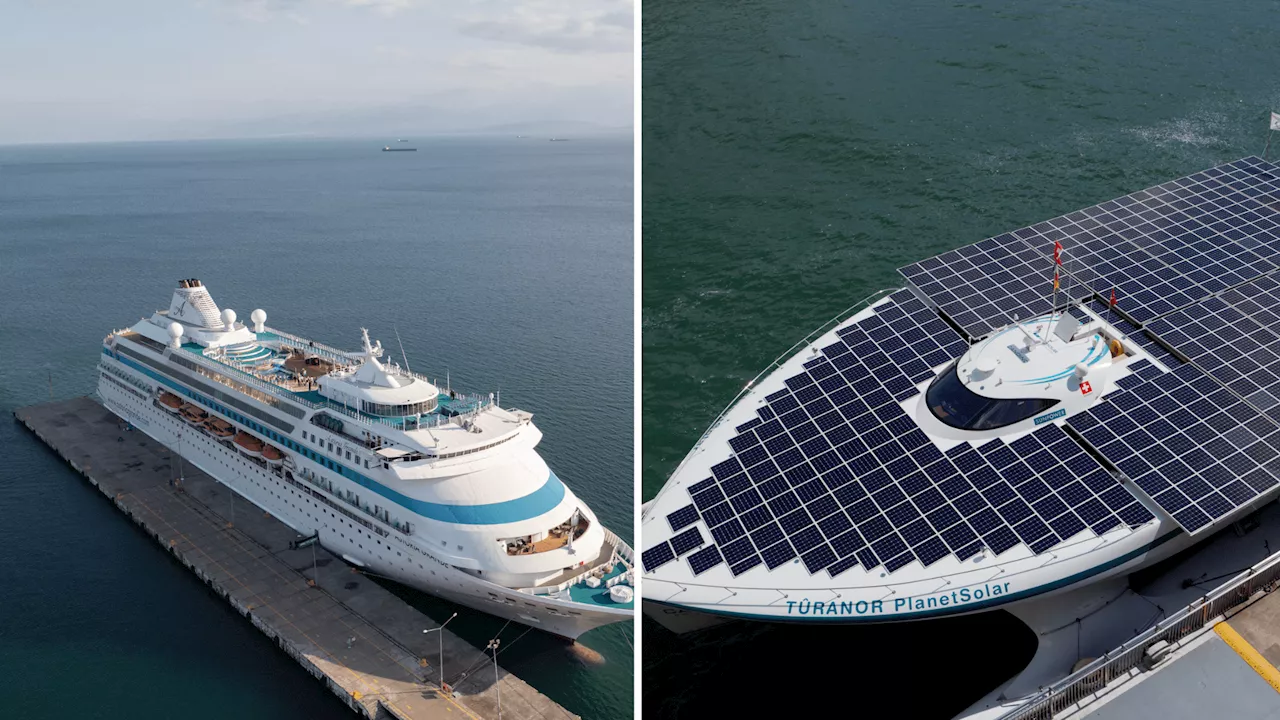German Aerospace Center (DLR) scientists propose integrating PV systems into cruise ships, aiming to improve efficiency and reduce fuel consumption. Simulations tested three DC configurations and revealed potential for significant energy savings through PV and battery storage integration.
Scientists from the German Aerospace Center (DLR) have proposed a novel approach to integrating photovoltaic (PV) systems into cruise ships, aiming to enhance efficiency and reduce fuel consumption. Recognizing the industry's shift towards direct current (DC) onboard grids, the researchers explored three distinct integration methods for PV systems.
Through simulations conducted aboard a cruise ship, they tested the performance of PV systems installed on balconies and evaluated the impact of different DC configurations. The studies encompassed two representative cruises, one in the Caribbean (March 2016) and another along the Norwegian coast (August-September 2016).The findings, published in a scientific journal, detail a suitable photovoltaic system for cruise ships, its integration into a DC grid, and the necessary battery storage capacity. Crucially, the research highlighted the potential for a synergistic effect between DC grids and battery storage, demonstrating a clear pathway towards increased energy efficiency and reduced reliance on fossil fuels. The researchers revealed that under optimal weather conditions, a PV system installed on a Helios class cruise ship could generate an average of 3.2 MWh per day in the Caribbean and 3.8 MWh per day along the Norwegian coast.To ensure a stable energy flow, the simulations emphasized the importance of a sufficiently large battery capable of bridging the 700 VDC output of the PV system to the 350 VDC distribution grid. This configuration optimizes the operation of any onboard generators, be they diesel engines or fuel cells. The proposed system involves installing two 250 W, 22%-efficient panels on each balcony cabin – one integrated into the glass barrier at a 90-degree angle, and the other affixed at a 30-degree angle beneath the balcony. This approach, if scaled to a Helios class ship with 1,655 balcony cabins, could yield a maximum output of 827.5 kW. Furthermore, the study underscored the need for sufficient battery capacity to ensure safe operation, recommending 161.4 Ah for the Caribbean cruise and 127.5 Ah for the Norwegian cruise. These findings pave the way for the widespread adoption of PV systems in the cruise industry, promoting sustainable maritime practices and reducing the environmental footprint of this sector.
Sustainability Energy PHOTOVOLTAIC CRUISE SHIP ENERGY EFFICIENCY SUSTAINABILITY DIRECT CURRENT BATTERY STORAGE
United States Latest News, United States Headlines
Similar News:You can also read news stories similar to this one that we have collected from other news sources.
 Beam me to the stars: Scientists propose wild new interstellar travel techA chemist turned science writer, Victoria Corless completed her Ph.D. in organic synthesis at the University of Toronto and, ever the cliché, realized lab work was not something she wanted to do for the rest of her days.
Beam me to the stars: Scientists propose wild new interstellar travel techA chemist turned science writer, Victoria Corless completed her Ph.D. in organic synthesis at the University of Toronto and, ever the cliché, realized lab work was not something she wanted to do for the rest of her days.
Read more »
 Scientists Propose a Purrfect Solution to Antarctic IsolationA group of scientists at McMurdo Station, the main Antarctic research base, are advocating for the introduction of a station cat to boost morale during the long, dark Antarctic winter.
Scientists Propose a Purrfect Solution to Antarctic IsolationA group of scientists at McMurdo Station, the main Antarctic research base, are advocating for the introduction of a station cat to boost morale during the long, dark Antarctic winter.
Read more »
 Tianjin University Invites Overseas Young Scientists for 2025 Excellent Young Scientists Fund ProgramThe National Natural Science Foundation of China (NSFC) Excellent Young Scientist Fund (Overseas) program, hosted by Tianjin University, seeks to attract outstanding young scholars from overseas to contribute to China's scientific and technological advancement.
Tianjin University Invites Overseas Young Scientists for 2025 Excellent Young Scientists Fund ProgramThe National Natural Science Foundation of China (NSFC) Excellent Young Scientist Fund (Overseas) program, hosted by Tianjin University, seeks to attract outstanding young scholars from overseas to contribute to China's scientific and technological advancement.
Read more »
 NHTSA Closes Investigation into Cruise Following Company ShutdownThe National Highway Traffic Safety Administration (NHTSA) has closed its investigation into Cruise, the self-driving car subsidiary of General Motors, after the company's closure. The investigation was prompted by an incident where a Cruise robotaxi struck and dragged a pedestrian. The NHTSA acknowledged Cruise's recall addressing safety concerns and GM's decision to end Cruise's operations.
NHTSA Closes Investigation into Cruise Following Company ShutdownThe National Highway Traffic Safety Administration (NHTSA) has closed its investigation into Cruise, the self-driving car subsidiary of General Motors, after the company's closure. The investigation was prompted by an incident where a Cruise robotaxi struck and dragged a pedestrian. The NHTSA acknowledged Cruise's recall addressing safety concerns and GM's decision to end Cruise's operations.
Read more »
 FBI Admits Hackers Breached AT&T Systems, Accessing Sensitive Agent DataThe FBI acknowledged that hackers gained access to AT&T's systems last year, potentially stealing call and text logs from FBI agents using the service. This breach raises serious cybersecurity concerns and could endanger agents, informants, and national security.
FBI Admits Hackers Breached AT&T Systems, Accessing Sensitive Agent DataThe FBI acknowledged that hackers gained access to AT&T's systems last year, potentially stealing call and text logs from FBI agents using the service. This breach raises serious cybersecurity concerns and could endanger agents, informants, and national security.
Read more »
 Wildfires Can Contaminate Drinking Water Systems With Harmful ChemicalsFearless Independent Journalism
Wildfires Can Contaminate Drinking Water Systems With Harmful ChemicalsFearless Independent Journalism
Read more »
